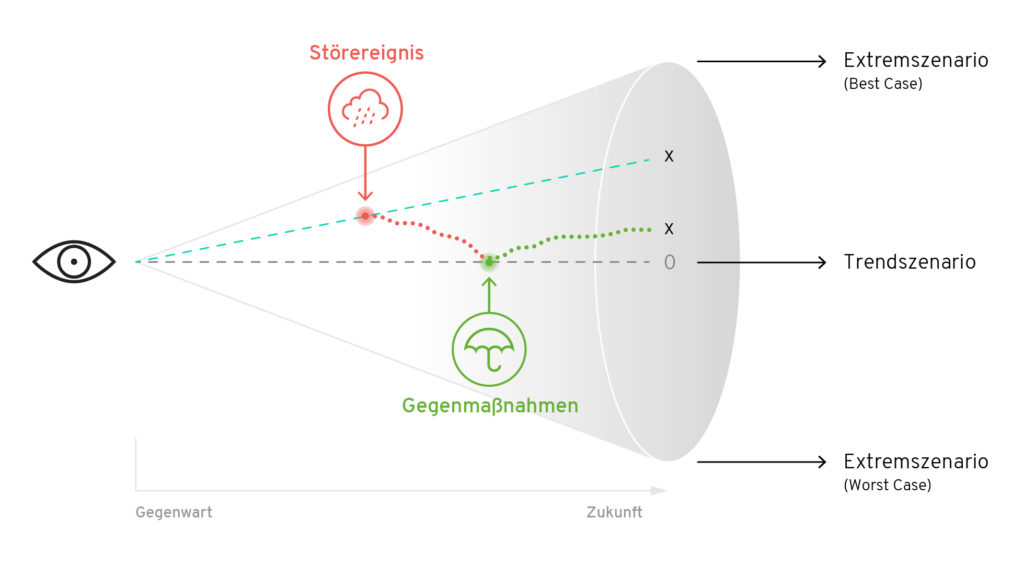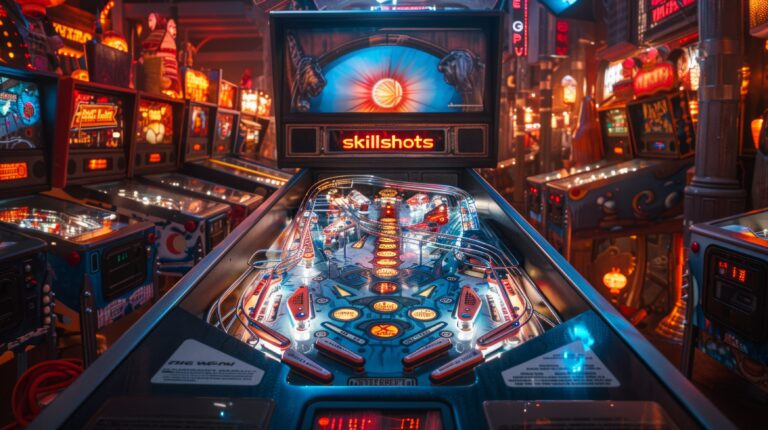
How to navigate your brand through the crises
Are we in the middle of the crisis or is it just beginning? No one knows. The only thing that is certain is that the world of tomorrow is emerging from the chaos of today. For companies and brands, it is now important to quickly gain resilience and retain the authority to interpret their own situation. The scenario technique can help.

In October 1907, the banks in the USA collapsed, resulting in bank runs and nationwide bankruptcies. This came as a shock to the 19-year-old James E. Casey, who had just founded his own company, the American Messenger Company, a few weeks earlier. He delivered parcels and letters himself on foot and by bicycle. Somehow he got through the tough early days. Today, his foundation is known as United Parcel Service (UPS), perhaps the most important logistics company in the world. The early stories of Microsoft or Apple during the oil crisis in the 1970s read similarly. At that time, the exploding prices for crude oil led to a huge recession. In a second step, however, they led to more efficiency in the companies and to innovative forms of energy production.
No crises is like the other
Big economic history can inspire us in small ways: When the Corona crisis led to the first lockdown in 2020, we as an agency determined possible crisis courses and conceivable effects on the business of one of our clients. In the process, we found the right time window for an online campaign. Advertisements on the major online portals were discounted by up to 80 per cent, because nobody wanted to advertise at that time. From our point of view, this was a unique opportunity! Thematically, we focused our client’s campaign on people in the home office. The click rates were enormous, sales picked up and the company got the decisive impetus to significantly expand its online store – and accelerated its own digital transformation. A stroke of luck, as the company now generates a third of its turnover online.
Every crisis results in different challenges that we face in business and society. At the moment, they are particularly dramatic and the consequences cannot be estimated. It is clear that customers’ habits are changing rapidly and new markets and opportunities are emerging. But in the fog of crisis, opportunities are hard to see. The drumfire of headlines about war, energy emergency and inflation leads to fear. Like the rabbit in front of the snake, we fall into a passive rigidity. This crisis will be irreversible on many levels. This makes it all the more important for us to secure the sovereignty of action over our business now and to maintain the communicative sovereignty of interpretation over our situation. Shaping the future, especially in times of crisis, begins with a reflection on one’s own framework conditions and options. It is the responsibility of each and every one of us to decide how we will fare as a team and as a company in this situation. How can this succeed?
Scenarios for future-proof communication
The scenario technique from crisis management also helps communication and marketing to prepare for the coming months and years. If the worst case (or the best case!) occurs, the technique provides solid ground on which teams and companies can act confidently, quickly and purposefully.

As a rule, it is advisable to develop three scenarios based on the initial situation. A positive extreme scenario with the most favourable future development, a trend scenario that continues the current situation and a negative extreme scenario that considers the worst future development. Then the following scenarios and guiding questions can be used to guide further communication.
Optimistic extreme scenario: The crisis has passed its peak. The war does not spread, the raw material problems are less drastic than feared, inflation slowly subsides. Management and marketing could ask themselves the following questions about this scenario, for example:
- Which topics will quickly become more relevant (again) for our customers and employees as the crisis continues to subside?
- How do we prepare ourselves communicatively for the upswing after the crisis?
- Which changes do we consciously continue, which ones can we end?
Trend scenario: The crisis will remain for months. The war in Ukraine remains at a gruelling and terrible level, the commodity situation remains tense, inflation is high. Crisis is the new normal:
- How do we use marketing budgets more efficiently?
- How do we accompany our employees and customers in the crisis in terms of communication?
- How can our brands provide security and trust in these uncertain times?
- How do we stay relevant in the face of permanently declining demand?
Pessimistic extreme scenario: The crisis is just beginning. War spreads, supply chains break, raw materials become even more expensive and inflation continues to rise unchecked:
- How do we survive as a company and what contribution can and must marketing make?
- How does our brand quickly become more resilient despite rising prices and supply bottlenecks?
- Which communicative emergency situations can occur and how do we prepare for them?
The answers can be used to derive a framework that can be used as a guideline for best case, middle case and worst case scenarios. The guiding questions here can only shed light on individual issues. Scenarios and guiding questions should be developed and posed individually in each case. Sober realism is called for.
The examples from the past are encouraging. We should assume that there will be a future even after this crisis. “The Only Thing We Have to Fear is Fear Itself”, as US President Franklin D. Roosevelt knew. Roosevelt knew. And he led his country through the Great Depression and World War II, after all.
Workshop: Rapid Resilience Marketing
What scenarios are you currently dealing with in marketing and brand management? Let us analyse your situation together.
We look forward to your enquiry!!


